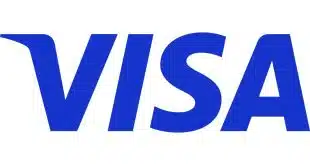Lots of acquirers see moving up to larger merchants as the next step in growing their portfolios. But it takes more than desire to make this segment a profitable one.
One definition of the merchant midmarket is those enterprises with annual revenue ranging from $10 million to $1 billion. They’re attractive because they can bring additional scale. That means processors covet them for their ability to add volume, thus spreading processing costs over more transactions. Since scale is a dominant goal in payments, many processors bank on the midmarket.
Moving upmarket is a tried-and-true strategy, but has gained greater attention as companies such as Square, which famously targeted small and micro merchants, began courting mid-size and larger merchants some years ago.
Competitor Shopify Inc. also embarked on an upmarket move several years ago. In 2018, it said its next phase of growth would be “one marked by expansion of our capabilities upmarket and down, in retail, in our ecosystem, and internationally.”
Not every payments provider has the resources of Square, which is owned by Block Inc., or Shopify. Still, that doesn’t mean it’s a move to shy away from. It takes work, including proper planning.
“Many payments companies have benefited from moving upmarket to serve mid-size and enterprise merchants, but it’s not without its challenges,” says Raviraj Hegde, senior vice president of growth at Donorbox, an Alexandria, Va.-based fundraising payments platform.
“It could make sense for a company if it has the infrastructure to deliver complex [point-of-sale] solutions, advanced analytics, and tailored support,” Hegde says. “More often than not, larger merchants require more than just basic payment
processing; they demand integrations, detailed reporting, and any tools that enhance operational efficiency. For those businesses better prepared to fulfill these needs, the rewards will be greater revenue opportunities and more enduring relationships with clients.”
‘From Broad to Deep’
What’s needed to make an upmarket move is a clear value proposition and an understanding of which customers benefit most from their products and services, says Jenn Reichenbacher, chief marketing officer at Stax Payments Inc., an Orlando, Fla.-based payments provider.
“To me, this is what guides a company’s ability to expand their reach, whether that’s by size of merchant, new verticals, or geographies,” Reichenbacher says.
It likely will not be an easy transition. “The midmarket is tough,” warns Don Apgar, director of payments at Javelin Strategy & Research, a financial services research firm. “When you get into that larger segment, the key to being able to sign that business is bringing something the merchant knows he needs or doesn’t know he needs. It could be a new gift card program, buy now, pay later options, or an issuing program.”
These new features are critical. “Because of the friction involved in switching there has to be a reason for the merchant to switch,” says Apgar.
That friction he refers to arises from the fact that many merchants may use point-of-sale systems and software specifically designed for their industries and geared to provide more than payment acceptance. And, as Apgar explains, larger merchants may require an acquirer to go deeper rather than broader.
A merchant may want a much deeper payments product set, but isn’t looking for ancillary services, such as payroll or personnel management, because it uses other specialized providers for these, he says. “As you go upmarket, you go from broad to deep in the feature set,” Apgar says.
A small-to-mid-size business wants a broad offering to minimize complexity, but larger merchants can be more comfortable with that. “As you move upmarket, the businesses get larger, and larger merchants are doing these functions themselves. They’re running payroll, they have their own revolving line of credit,” Apgar says. “Now, they go deep.”
That means they need payments orchestration, routing, and better performance out of the core thing they are buying, which is payments processing. It also means acquirers need to be as educated about their products and their prospective customers’ needs as possible.
‘Months or Years’
“Generally, [small-and-medium-size] providers are offering packaged services with less customization permitted, so the processor needs to ensure that their offerings are ‘ready for mid-size prime-time,’” says Thad Peterson, strategic advisor at Datos Insights, a Boston-based consulting and services firm.
“Another challenge is that, while the smaller players are moving upmarket, larger players are moving down into the mid-size market, so the competition is increasing in that category,” Peterson adds.
Realism should be a key part of planning an upmarket move.
“It’s not surprising that firms that historically have focused on smaller micro-merchants have expanded their offerings to mid- and enterprise-level [sellers], but they need to be realistic about how their products solve for the customer and their size,” Reichenbacher says.
“Service is also a major factor, as enterprises, for example, have very specific support requirements with more dedicated and on-site needs, versus smaller merchants who are happy to be supported via chat, email, or over the phone,” Reichenbacher adds.
For upmarket success, the sales approach must be different, too.
“Mid- and enterprise accounts require a more strategic approach end-to-end from marketing to sales to support,” Reichenbacher says. “From a sales perspective, it’s a longer-term sale, oftentimes involving multiple decision makers, a [request for information] or [request for proposal], and then a longer legal negotiation. Sales cycles on [small-and-medium-size merchants] can be days or weeks while mid-[size] and enterprise [sales] are most often months or even years in the making.”
Acquirers must focus on a clear list of prospects, she says, so the marketing investment is effective in building the sales pipeline.
“Sales partnership and focus are key to ensuring the marketing and sales efforts are reaching the top [prospects] for each sales leader,” Reichenbacher says. “The strategy must involve a combination of digital, email, social, thought leadership, events, and outreach. Storytelling is also key—ensuring that your packaging is aligned with the pain points of the prospects you’re targeting and speaking with and leveraging third-party validation as much as you can.”
Added Costs
And the sales cycles tend to be longer than for smaller businesses, “because merchants have a lot more at stake,” Apgar says. “The merchant tends to be a little more cautious in making a decision. They will do more due diligence.” The sales cycle may range from nine to 12 months, he says.
At the same time, a larger merchant may have staff that is as well-versed in payments processing as an acquirer, says Peterson. “Larger merchants often have dedicated payments teams with a great deal of expertise and high expectations,” he says. “They will expect their provider to be fully versed on the issues that larger businesses confront and they should be prepared to deliver a customized solution.”
And then there’s the added costs, such as marketing expenses.
“Companies that do very well with the smaller merchants may find the rising cost of acquisition and the requirement for specialized support teams a burden,” Hegde says. “Mid-size and enterprise merchants are different. They require a consultative selling and relationship-building sales approach. The investment needed to [provide] these clients with customized solutions can put stress on companies not prepared to scale.”
The payoff, however, can be very valuable. Not only could the additional transaction volume lower a platform’s overall transaction cost, but the brand recognition enjoyed by larger customers could persuade other large merchants to switch.
“This is a company-by-company decision, but overall the value comes in transaction and processing volumes, recognition, enterprise business value, and overall payment capabilities,” Reichenbacher says.





